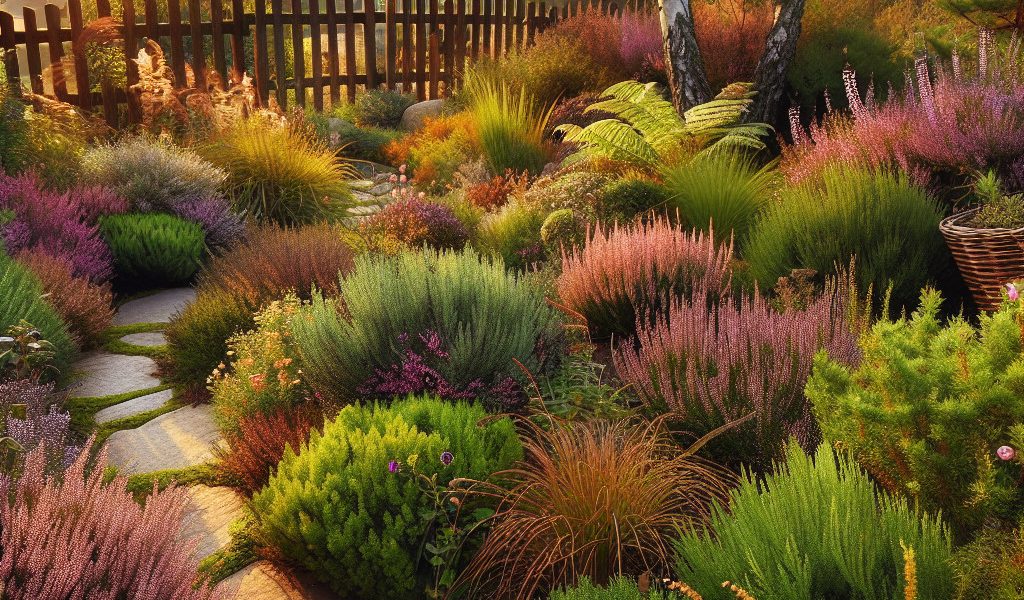Unleashing the Charm: Transforming your Garden with the Beauty of Wild Heather
Introduction
Wild heathers are plants with vibrant colors and natural beauty that flourish during the fall and winter months. They provide a wonderful splash of color in our gardens when most other plants go dormant. In our online store, you will find a wide choice of wild heather as well as all the necessary advice for their maintenance. Discover how to beautify your green space with these easy-to-care-for plants and learn about their specific soil, exposure and companion requirements.
The different varieties of wild heather
There are several types of wild heather, each with its own characteristics and climatic preferences. Among the most common are:
- Calluna vulgaris, also called “common heather” or “callune heather”, is native to Europe and Asia Minor. It is very hardy and tolerates the cold well.
- Erica Carnea, also known as “snow heather”, is an alpine species native to European mountains. It flowers from January until April.
- Erica Cinerea, or “honey heather”, is a species native to Western Europe which is distinguished by its bell-shaped flowers and its gray-green color.
- Daboecia cantabrica, the “Irish heather” or “Cantabrian heather”, is a species native to the Atlantic regions of Europe. It prefers acidic and humid soils.
The natural beauty of wild heather
Wild heathers put on a colorful spectacle during the colder months of the year, with their shades ranging from pale pink to deep purple to pure white. Their evergreen foliage, often tinged with bronze or gold in autumn, further adds to their visual appeal. Flowers also attract various pollinating insects such as bees and butterflies, contributing to the biodiversity of your garden.
Ease of maintenance and specific requirements
Wild heathers are generally easy to care for, making them an ideal choice for beginning gardeners or those who want to limit the time spent caring for the plants. Here are some practical tips to ensure their proper development:
- Soil type: Most heathers prefer acidic, well-drained soil rich in organic matter. You can add peat or compost to improve soil conditions if necessary.
- Exposure : Wild heathers appreciate a sunny to partial shade exposure. A location that is too shady can limit their flowering and weaken the plant.
- Watering: Be sure to keep the soil slightly moist, especially during dry periods. Remember that some species, like Daboecia cantabrica, need moister soil than others.
- Size : Lightly prune your heather after flowering to stimulate the growth of new stems and maintain a compact shape. Avoid cutting into old wood, however, as this could damage the plant.
The association of heather with other plants
To create a harmonious and aesthetically pleasing garden, it is important to know which plants go well with wild heather. Here are some suggestions:
- Ferns: Ferns are perfectly adapted to the same conditions as heathers (acidic soil and partial shade) and offer an interesting contrast with their delicate shapes and dark green hues.
- Azaleas and rhododendrons: These flowering shrubs also share a love of acidic soil and bring a burst of color in spring.
- Dogwoods: Dogwoods provide a striking contrast with their colorful stems, which stand out particularly well when planted near softer-hued heathers.
- Spring bulbs: Crocuses, snowdrops and other early bulbs can be planted between heather to create a pretty flower carpet at the end of winter.
Conclusion
With their natural beauty, ease of maintenance and ability to beautify our gardens during the autumn and winter months, wild heathers definitely deserve a place in your green space. Do not hesitate to consult our online store to discover our selection of heather as well as all the advice necessary for their successful cultivation. You will be enchanted by the charm they will bring to your garden!
